| [1] Ogihara S, Yamazaki T, Maruyama T, et al. Prospective multicenter surveillance and risk factor analysis of deep surgical site infection after posterior thoracic and/or lumbar spinal surgery in adults. J Orthop Sci. 2015;20(1):71-77.[2] Meredith DS, Kepler CK, Huang RC, et al. Postoperative infections of the lumbar spine: presentation and management. Int Orthop. 2012;36(2):439-444.[3] 中华人民共和国卫生部.医院感染诊断标准(试行)[J]. 中华医学杂志, 2001,81(5):61-67.[4] 刘智鹏,张伟. 腰椎管狭窄症椎弓根内固定术后深部感染的因素分析及处理措施[J]. 河北医学, 2017,23(10):1642-1646.[5] 程清平,王东福,焦朋,等. 腰椎间盘突出症术后椎间隙感染的治疗及危险因素分析[J]. 中国骨与关节损伤杂志, 2017,32(1): 32-35.[6] 赵睿,王锋,赵晓东,等. 高龄患者PLIF术后感染的危险因素分析[J]. 中国社区医师, 2017,33(34):87-88.[7] 王军,郜顺兴,刘晓慧,等. 腰椎后路手术后早期感染危险因素分析[J]. 航空航天医学杂志, 2017,28(11):1330-1332.[8] 范一鸣,王征,王岩. 腰椎后路内固定术后早期切口深部感染的相关因素分析[J]. 颈腰痛杂志, 2017,38(4):327-330.[9] 赵仕博. 胸腰椎后路手术术后切口感染的危险因素分析[D]. 新疆医科大学, 2017.[10] 张雷,田永昊,刘新宇,等. 腰椎后路微创髓核摘除术后切口感染的风险因素分析[J]. 临床骨科杂志,2017,20(4):419-423.[11] 郑建平,郑琦. 腰椎间盘突出症患者术后椎间隙感染的危险因素分析与预防[J].中华医院感染学杂志,2016,26(9): 2076-2078.[12] 张亮,王文俊,巢玉柳,等. 皮下脂肪厚度对腰椎后路术后发生手术部位感染的影响[J]. 河北医药,2016,38(20):3107-3109.[13] 蔡德波.腰椎后路内固定术后早期深部感染的危险因素分析[D]. 广西医科大学,2016.[14] 谭小云,蒲涛,刘季鲁,等. 腰椎融合内固定术后切口感染危险因素分析[J]. 中华临床感染病杂志,2015,8(5):451-453.[15] 应焜. 腰椎后路减压融合内固定术术后感染及危险因素分析[D]. 浙江大学, 2015.[16] 李贺,王宸,吴小涛,等. 腰椎后路椎间融合术后伤口感染的相关因素分析[J]. 江苏医药,2014,40(7):794-796.[17] 黄帅豪,柯雨洪,王义生,等. 腰椎后路内固定术后感染的原因分析与治疗体会[J].中国矫形外科杂志, 2014,22(21):2002-2005.[18] 刘云涛. 手术台次是否是腰椎手术术后切口感染的危险因素[D]. 新疆医科大学,2014.[19] 马锐. 腰椎管狭窄症手术部位感染相关危险因素Logistic回归分析[D]. 新疆医科大学,2014.[20] 朱修桥,郭景东,吕慧,等. 颈椎病与腰椎管狭窄症术后感染的危险因素分析[J]. 中华医院感染学杂志,2014,24(17):4319-4321.[21] 陈鹏,陈刚,朱国兴. 腰椎术后感染的原因分析与治疗策略[J]. 临床骨科杂志,2013,16(5):506-509.[22] [梁昌凡,徐应林,张贤锋. 腰椎间盘突出症术后椎间隙感染的原因分析及预防措施[J]. 中国医学创新,2012,9(31):6-8.[23] 张宇鹏,王晓晶,李利,等. 皮下脂肪厚度对腰椎术后感染的影响[J]. 感染、炎症、修复, 2012,13(4):219-222.[24] Chen SH, Lee CH, Huang KC, et al. Postoperative wound infection after posterior spinal instrumentation: analysis of long-term treatment outcomes. Eur Spine J. 2015;24(3): 561-570.[25] DeSanto J, Ross JS. Spine infection/inflammation. Radiol Clin North Am. 2011;49(1):105-127.[26] Schuster JM, Rechtine G, Norvell DC, et al. The influence of perioperative risk factors and therapeutic interventions on infection rates after spine surgery: a systematic review. Spine (Phila Pa 1976). 2010;35(9 Suppl):S125-S137.[27] D'Agostino C, Scorzolini L, Massetti AP, et al. A seven-year prospective study on spondylodiscitis: epidemiological and microbiological features. Infection. 2010;38(2):102-107.[28] Cronquist AB, Jakob K, Lai L, et al. Relationship between skin microbial counts and surgical site infection after neurosurgery. Clin Infect Dis. 2001;33(8):1302-1308.[29] Cronquist AB, Jakob K, Lai L, et al. Relationship between skin microbial counts and surgical site infection after neurosurgery. Clin Infect Dis. 2001;33(8):1302-1308.[30] Vaidya R, Carp J, Bartol S, et al. Lumbar spine fusion in obese and morbidly obese patients. Spine (Phila Pa 1976). 2009;34(5):495-500.[31] Ho C, Sucato DJ, Richards BS. Risk factors for the development of delayed infections following posterior spinal fusion and instrumentation in adolescent idiopathic scoliosis patients. Spine (Phila Pa 1976). 2007;32(20):2272-2277.[32] Pull TGA, Cohen DB. Incidence, prevalence, and analysis of risk factors for surgical site infection following adult spinal surgery. Spine (Phila Pa 1976).2009;34(13):1422-1428. [33] Klein JD, Hey LA, Yu CS, et al. Perioperative nutrition and postoperative complications in patients undergoing spinal surgery. Spine (Phila Pa 1976). 1996;21(22):2676-2682.[34] Govender S. Spinal infections. J Bone Joint Surg Br. 2005; 87(11):1454-1458.[35] Chen KW, Yang HL, Lu J, et al. Risk factors for postoperative wound infections of sacral chordoma after surgical excision. J Spinal Disord Tech. 2011;24(4):230-234.[36] Schuster JM, Rechtine G, Norvell DC, et al. The influence of perioperative risk factors and therapeutic interventions on infection rates after spine surgery: a systematic review. Spine (Phila Pa 1976). 2010;35(9 Suppl):S125-S137.[37] Chen S, Anderson MV, Cheng WK, et al. Diabetes associated with increased surgical site infections in spinal arthrodesis. Clin Orthop Relat Res. 2009;467(7):1670-1673.[38] Chen KW, Yang HL, Lu J, et al. Risk factors for postoperative wound infections of sacral chordoma after surgical excision. J Spinal Disord Tech. 2011;24(4):230-234.[39] Olsen MA, Nepple JJ, Riew KD, et al. Risk factors for surgical site infection following orthopaedic spinal operations. J Bone Joint Surg Am. 2008;90(1):62-69.[40] Milstone AM, Maragakis LL, Townsend T, et al. Timing of preoperative antibiotic prophylaxis: a modifiable risk factor for deep surgical site infections after pediatric spinal fusion. Pediatr Infect Dis J. 2008;27(8):704-708.[41] Pull TGA, van Laarhoven CJ, Cohen DB. Incidence of surgical site infection following adult spinal deformity surgery: an analysis of patient risk. Eur Spine J. 2010;19(6):982-988.[42] Hegde V, Meredith DS, Kepler CK, et al. Management of postoperative spinal infections[J]. World J Orthop. 2012;3(11): 182-189.[43] Meredith DS, Kepler CK, Huang RC, et al. Postoperative infections of the lumbar spine: presentation and management. Int Orthop.2012;36(2):439-444.[44] 关炳瑜,阿海,贺元,等. 脊柱外科术后感染的影响因素分析[J]. 临床骨科杂志,2016,19(5):547-549. |
.jpg)
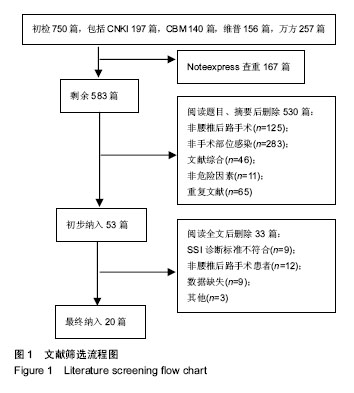
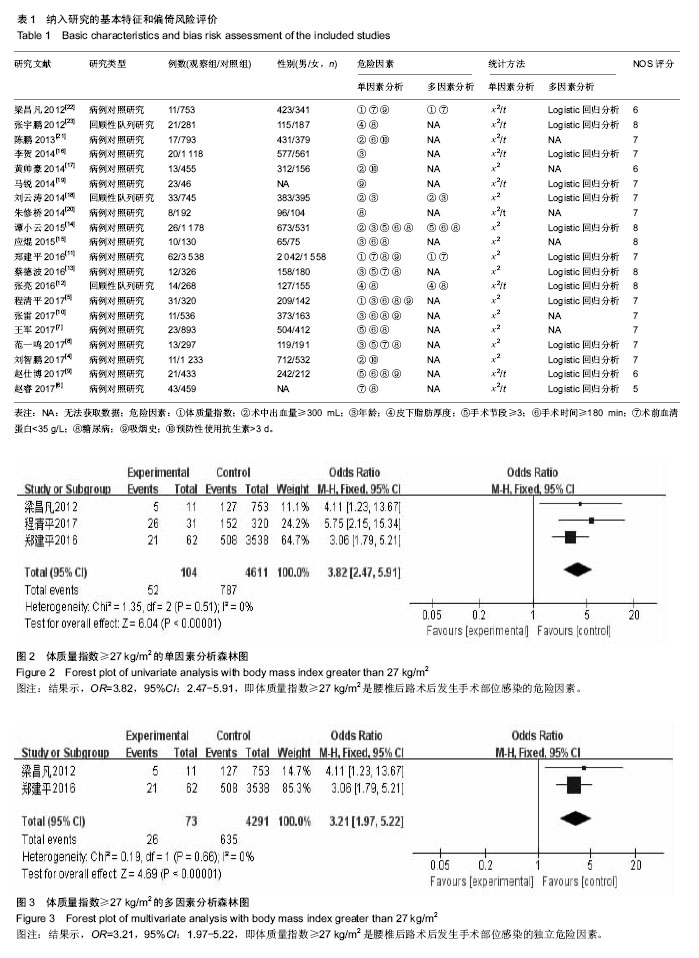
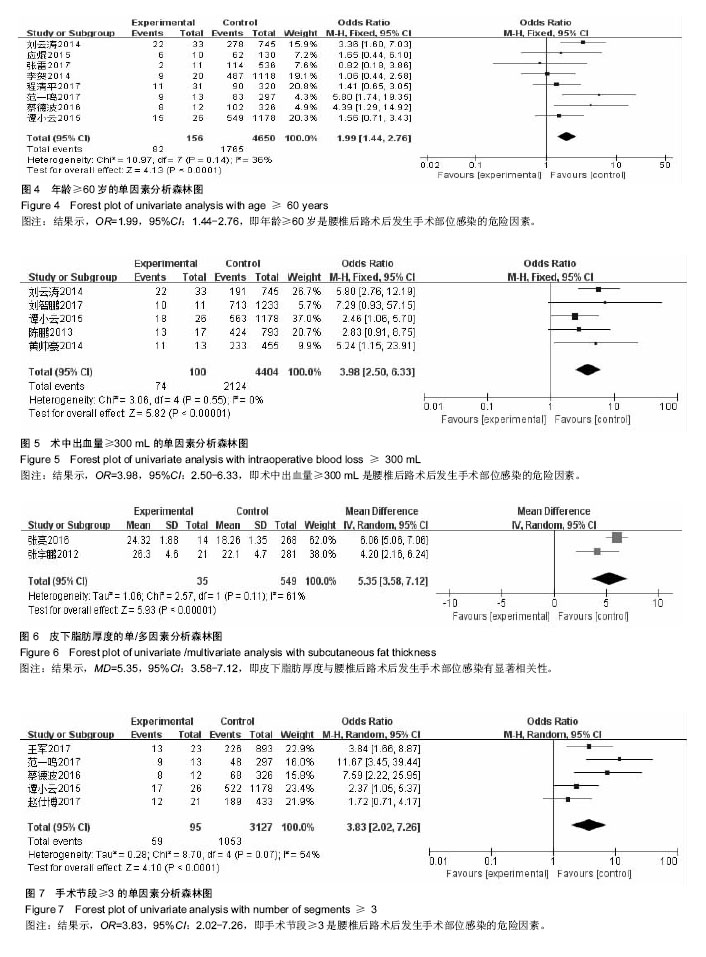

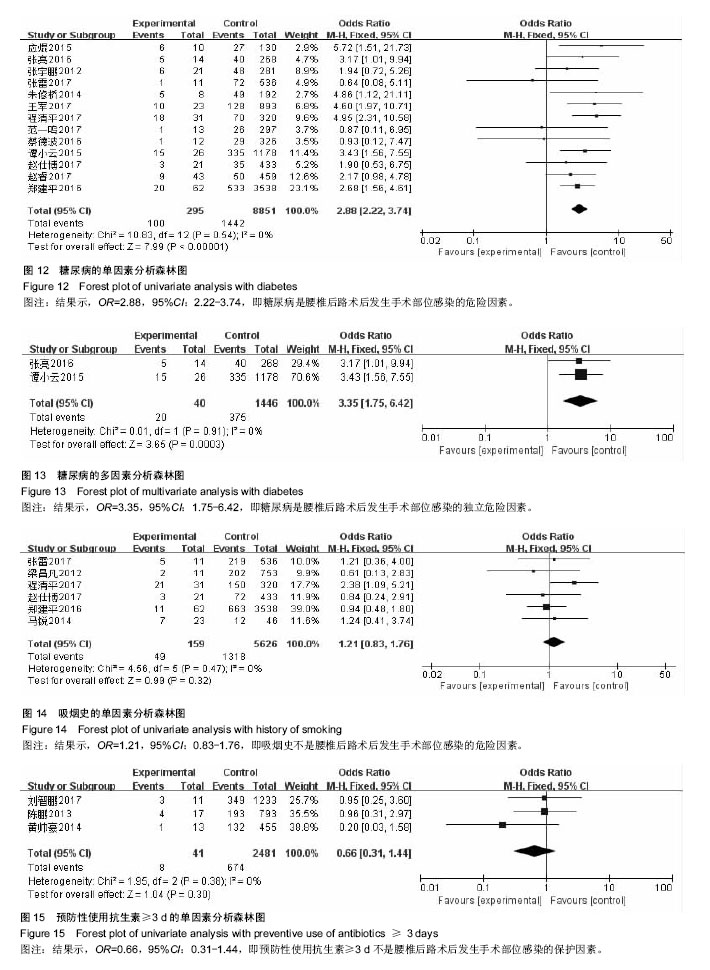
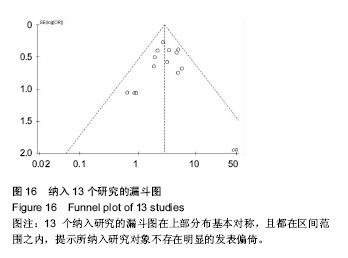
.jpg)